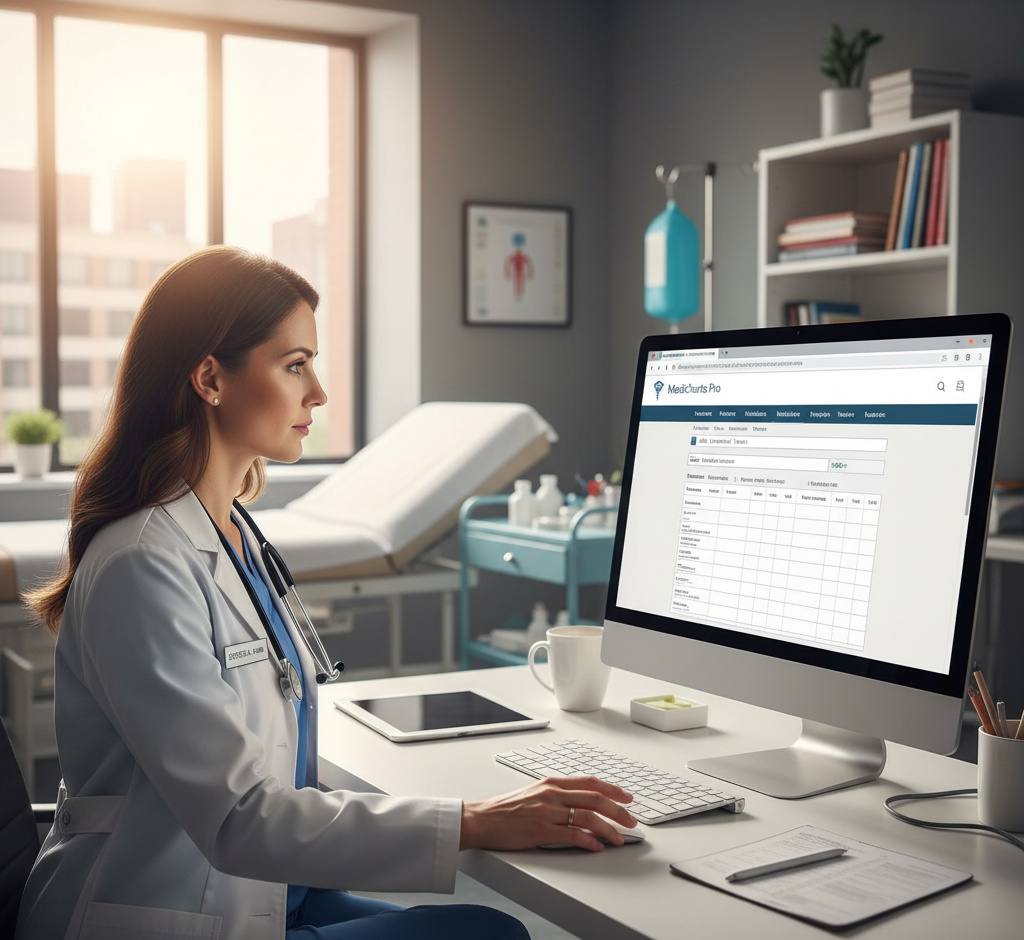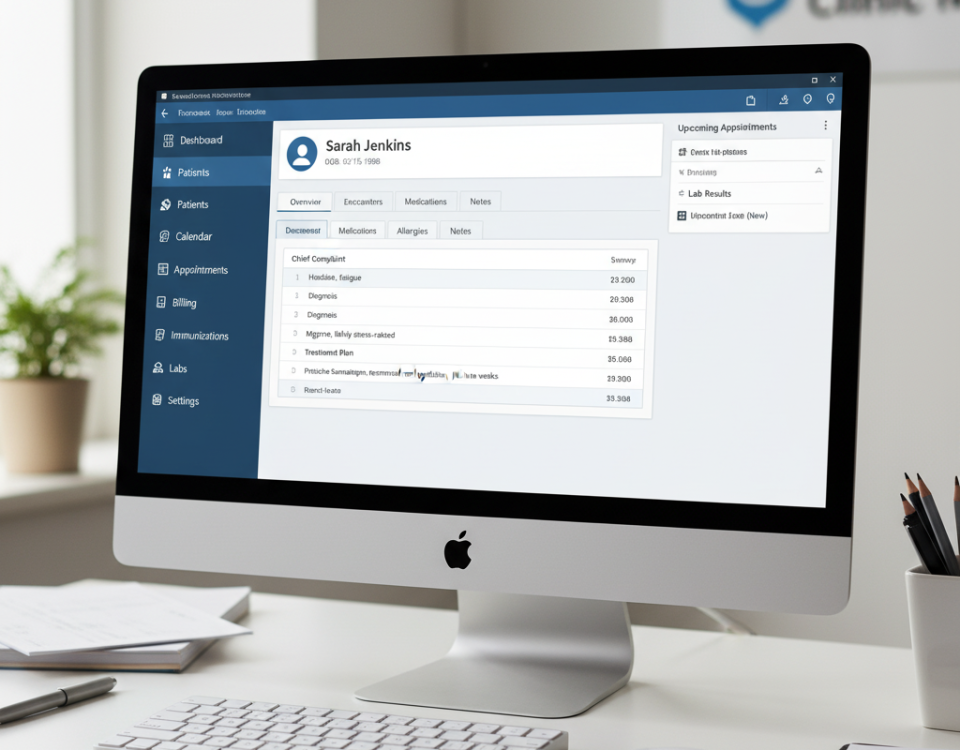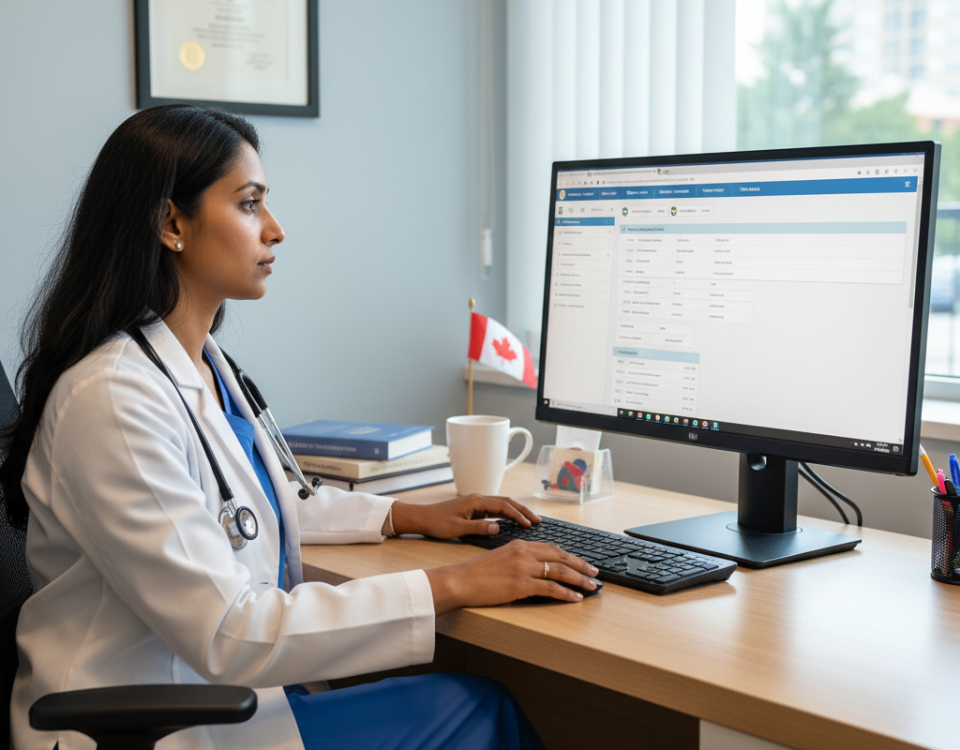- Home
- About Us
- EMR Features
-
-
- EMR Features
-
- Patient Health Features
-
- Clinic Features
-
-
- Specialties
-
- Blog
- Contact Us
5 Common MCEDT Submission Challenges and How Modern Software Solves Them

For Ontario clinics, claim submission is the financial backbone that keeps operations stable. Every appointment, procedure, or consultation depends on accurate and timely reimbursements from the Ontario Health Insurance Plan (OHIP). Yet the process often becomes a source of frustration when it relies on outdated systems or manual workflows. Submissions through the Ministry’s Medical Claims Electronic Data Transfer (MCEDT) system are essential, but even small errors can delay payments and create ripple effects across the clinic.
This is where web-based EMR software changes the picture. By combining patient records, scheduling, and billing into one streamlined platform, modern solutions simplify submissions, reduce rejection rates, and give clinics greater visibility into revenue cycles. Before exploring how advanced tools solve the problem, it’s important to look at the most common challenges Ontario clinics face when working with MCEDT.
1. Manual Data Entry Errors
Human error is inevitable when staff handle claim submissions manually. Patient names may be misspelled, billing codes may be mistyped, or dates may be entered incorrectly. Each mistake increases the likelihood of rejection and adds hours of extra work for staff tasked with correcting and resubmitting claims.
For example, imagine a high-volume family practice with hundreds of weekly appointments. Even a 5% error rate in claims translates into dozens of delayed payments. These delays not only disrupt revenue but also demand staff resources that could be directed elsewhere.
Web-based medical billing software addresses this by automating much of the process. Information flows directly from clinical records into claim forms. The system validates codes, checks for missing fields, and prompts staff to correct issues before submission. This automation significantly reduces errors, ensuring claims leave the clinic accurate the first time.
2. Rejected or Delayed Claims
Rejected claims are one of the most frustrating parts of medical billing. They don’t just affect cash flow—they also force staff into a cycle of corrections, resubmissions, and follow-ups. In Ontario, claim rejections often stem from outdated fee schedules, missing information, or inaccurate diagnostic codes.
Traditional systems leave clinics playing catch-up. By the time a rejection notice arrives, days or weeks may have passed. Modern web-based electronic medical records software solves this by embedding OHIP billing logic directly into the workflow. It updates automatically with fee changes, validates data before submission, and uses built-in alerts to prevent errors.
The result is fewer rejections, quicker reimbursements, and more predictable cash flow—a significant advantage for clinics of any size.
3. Time-Consuming Reconciliation Processes
Reconciling remittance advice with submitted claims can feel like an endless loop. Staff often compare payment records line by line against claims spreadsheets, a task that is tedious and error-prone. For clinics processing thousands of claims each month, this creates a heavy administrative load.
With Web-based medical billing software, reconciliation becomes far more efficient. The system automatically imports remittance advice files from MCEDT and matches them to submitted claims. Any discrepancies—such as underpayments or denials—are flagged for review. Instead of spending hours checking every entry, staff focus only on exceptions.
This automation doesn’t just save time; it also improves financial accuracy, enabling clinics to close their books more quickly and maintain healthier revenue cycles.
4. Limited Transparency and Tracking
Traditional workflows often operate like a black box. Once a claim is submitted, staff may not know its progress until reimbursement arrives—or doesn’t. This lack of visibility creates uncertainty about revenue and leaves clinics unable to plan effectively.
Modern web-based EMR software provides real-time claim tracking and reporting. Dashboards show which claims are pending, accepted, or rejected, along with expected reimbursement amounts. For clinic managers, this visibility provides critical insights into revenue forecasting and cash flow planning.
Greater transparency also helps identify patterns. If certain types of claims are frequently rejected, clinics can take corrective action earlier rather than waiting for months of backlogged errors to pile up.
5. Administrative Burden on Staff
Perhaps the most significant challenge of all is the administrative strain. Staff often spend more time managing billing than supporting clinical workflows or patient needs. Repetitive data entry, manual reconciliation, and error correction contribute to burnout and turnover, both of which hurt clinic efficiency in the long run.
By adopting Web-based electronic medical records software with integrated billing, clinics can offload much of this burden. Automated claim generation, batch submissions, and reconciliation reduce repetitive work. Staff can redirect their time toward patient-facing tasks, improving overall clinic experience while reducing administrative strain.
How Modern MCEDT Software Empowers Ontario Clinics
Addressing these challenges requires more than patchwork fixes—it requires a system designed for integration and automation. Modern MCEDT-ready platforms bring billing, scheduling, and patient management under one roof, ensuring clinics no longer juggle multiple disconnected systems.
Key benefits include:
- End-to-end automation: From encounter documentation to final claim submission, everything is connected in one workflow.
- Error prevention at the source: Real-time validation ensures accuracy before claims are submitted.
- Scalable support: Whether serving a single provider or a large multi-specialty group, web-based EMR software adapts to clinic size and complexity.
- Improved reporting: Built-in analytics track revenue trends, highlight bottlenecks, and provide actionable insights.
- Secure compliance: PHIPA-compliant platforms safeguard patient information while supporting OHIP billing requirements.
By leveraging web-based medical billing software, clinics transform MCEDT submission from a tedious necessity into a streamlined, strategic advantage.
Simplify MCEDT Submissions with the Right Solution
MCEDT submissions are a non-negotiable part of Ontario’s healthcare system, but they don’t have to weigh down clinic operations. Manual errors, rejected claims, reconciliation delays, and staff burnout all stem from outdated workflows. Modern web-based electronic medical records software solves these challenges by automating submissions, enhancing accuracy, and improving transparency.
Alembico EMR provides a comprehensive solution designed specifically for Ontario clinics. With integrated OHIP billing, MCEDT submission, and patient record management, it reduces administrative headaches and ensures revenue cycles stay on track.
Book a demo with Alembico EMR today and see how modern Web-based EMR software can transform claim submissions into a seamless, reliable process.
Also read:
How MCEDT Billing Software Simplifies Claim Submissions for Ontario Clinics
Tags: EMR software, EMR Solution, Ohip Billing Software


